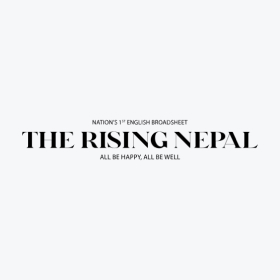- Thursday, 8 January 2026
Informal economy in Nepal stands at 42.66% of GDP: Study
Kathmandu, Jan. 26: A recent study by the Central Department of Economics of the Tribhuvan University (TU) has estimated the size of Nepal's informal economy at 42.66 per cent of the Gross Domestic Product (GDP) in the Fiscal Year 2020/21.
The size of Nepali economy then was Rs. 3943 billion. It means according to the estimates, economic and business transactions of about Rs. 1682 billion were done informally that particular year. Had all the economic activities been formal, the size of GDP then would have been Rs. 5625 billion which is larger than the current size of economy. The government estimates have maintained that the size of economy in the last FY 2022/23 would be Rs. 5381 billion.
According to Prof. Dr. Shiva Raj Adhikari, Head of the Department, this study presents the potential scope of the informal economy in Nepal using national accounts and Currency Demand Approach.
The report is jointly prepared by Prof. Adhikari and Dr. Nirmal Kumar Raut, Associate Professor of the Department.
According to the National Accounts Approach (NAA), the average size of informal economy in 2020/21 is 38.6 per cent while the CDA puts it at 41.31 per cent.
However, these approaches have shown opposite trend in terms of the expansion of informal economic activities. The NAA has shown that the size of informal economy has come down to 38.60 per cent of the GDP in 2020/21 from 49.10 per cent in 2010/11. This approach has also shown that the informal activities have increased in the previous two fiscal years and went up from 37.60 per cent in 2018/19. But CDA estimated that the size of informal economy has gone up to 41.31 per cent of the GDP in 2020/21 from 35.52 per cent a decade ago.
The study conducted by the Department estimated that the real estate sector was astonishingly highly informal. About 99.97 per cent of the real estate economy, which is Nepal's third-largest contributor to the economy, is informal. It accounted for 9.43 per cent of the GDP in 2020/21.
This industry includes real estate activities involving owned or leased property, fee or contract real estate activities, and owner-occupied dwelling services. "Because of its nature, most of the share is owner-occupied dwelling service, which is treated as informal," read the study.
Another highly informal area of the national economy is agriculture, forestry and fishing which is 96.48 per cent. However, agricultural activities have been more formalised in recent years.
Other highly informal sectors are accommodation and food service 50.42 per cent, and arts and entertainment 33.69 per cent.
The study suggested that given the extent of the informal economy shown in the study, further research is needed to understand the nature, type and coverage of the informal economy in Nepal.
A survey-based study is needed to further diagnose the identified areas where such informal transactions are prevalent.
"Given that Nepal shares a 1770- kilometer open border with India and that the significant cross-border trades are informal, it may also be helpful to understand how such informal transactions are carried out by businesses operating in the bordering areas," suggested the study.
This may involve interviewing stakeholders from the local levels in bordering areas (such as small businesses, and security and customs officials, local community) to those at the national level (such as big traders and manufacturers, and security and customs officials).












-original-thumb.jpg)



